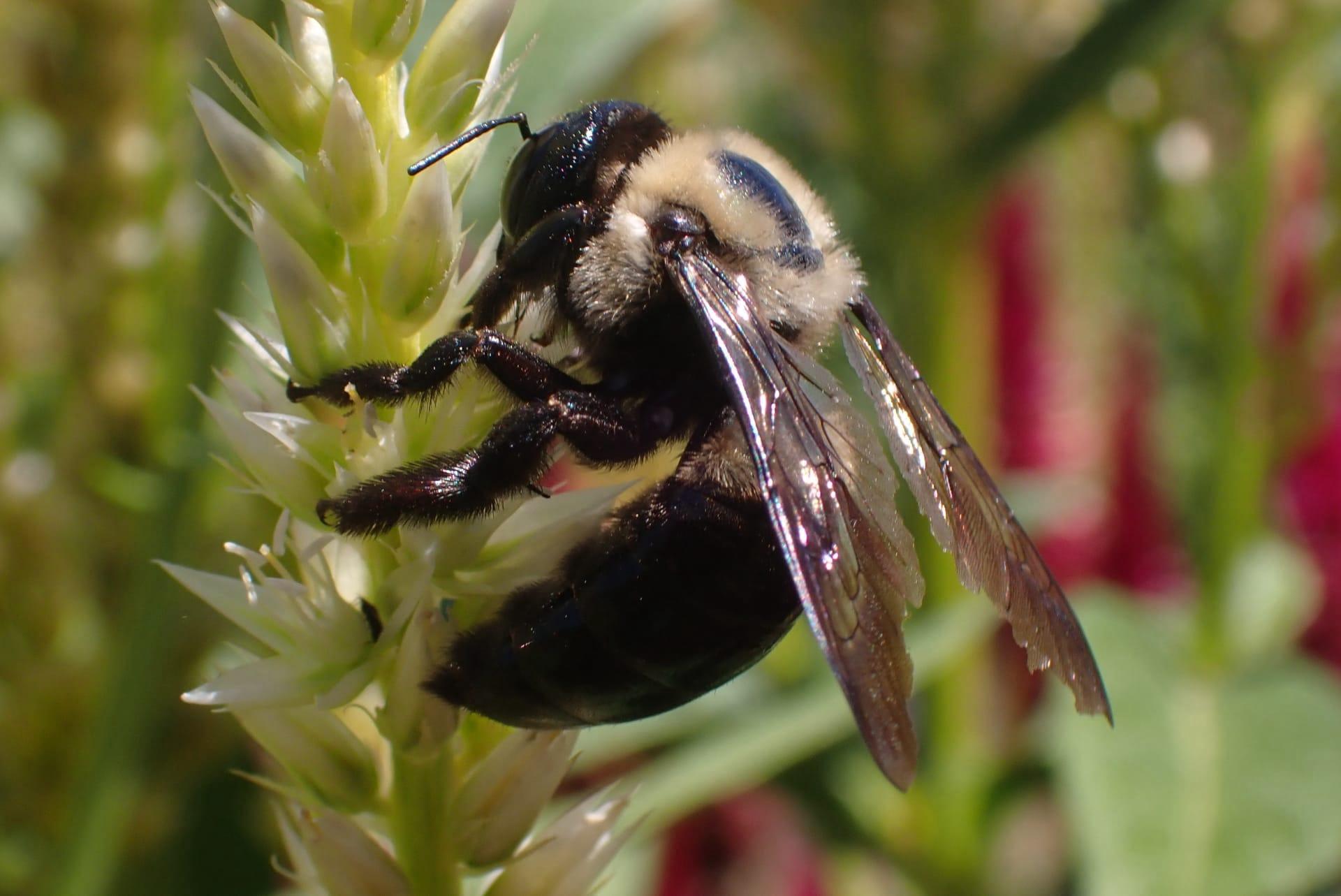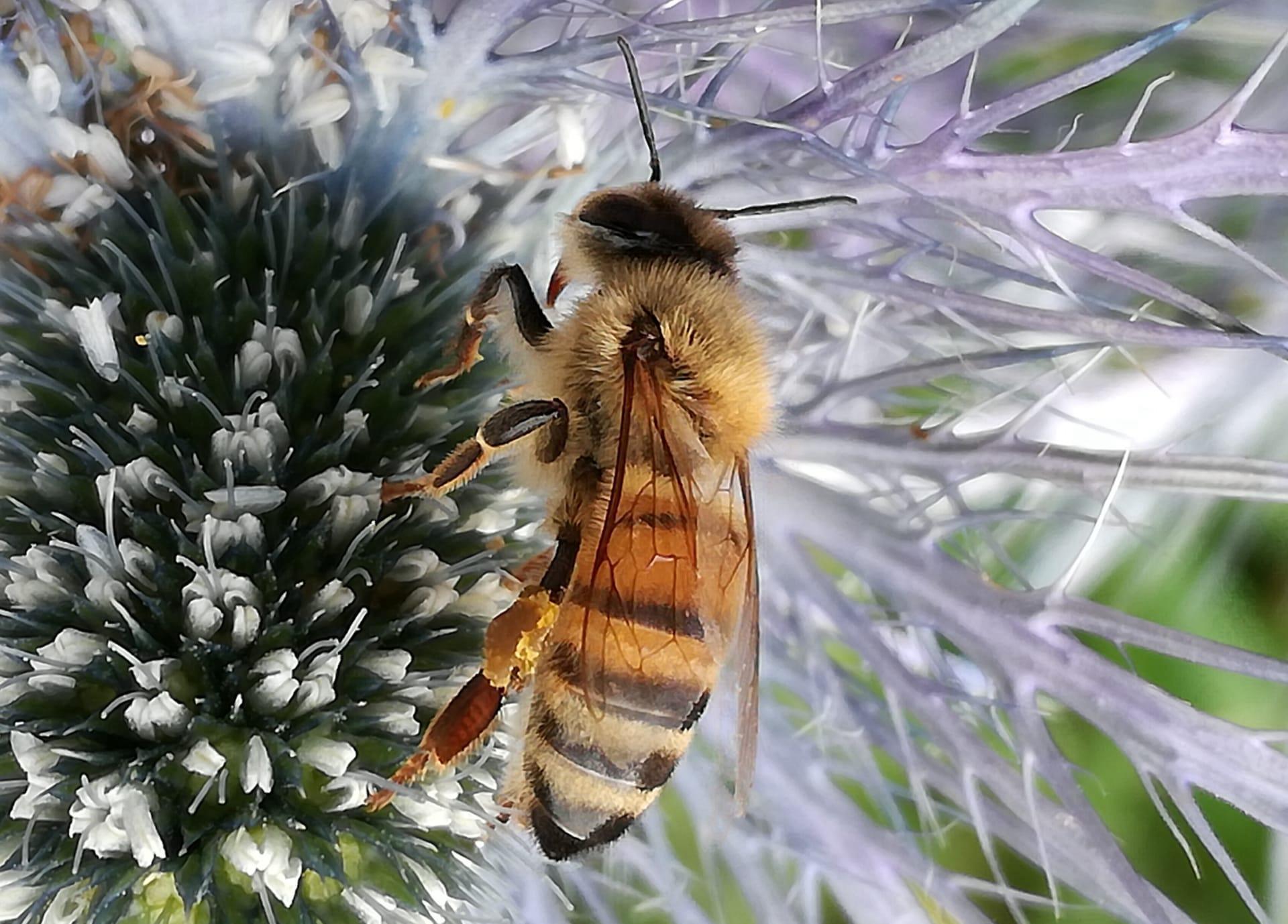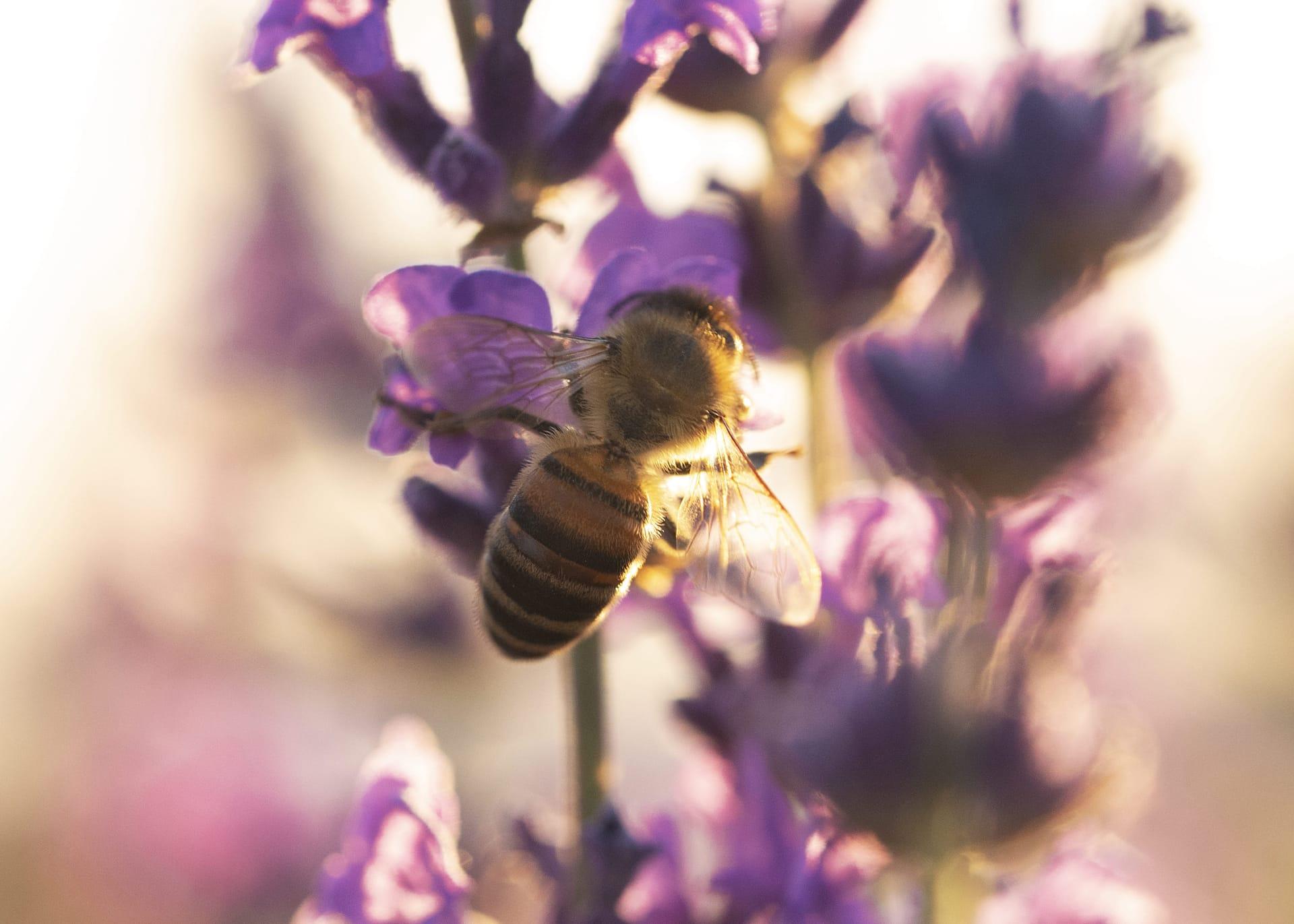Eastern Carpenter Bee
- Home /
- Mini Encyclopedia /
- Animal /
- Eastern Carpenter Bee
1
Eastern Carpenter Bees, scientifically known as Xylocopa virginica, belong to the genus Xylocopa in the family Apidae. This species is part of the Hymenoptera order, which also includes ants, bees, and wasps. The Eastern Carpenter Bee is distinct within its genus due to its size, ranging from 0.75 to 1 inch in length, and its notable black and yellow coloring. Females are predominantly black with a shiny abdomen, while males have a white spot on their face.
The Eastern Carpenter Bee is predominantly found in the eastern United States, stretching from New York to Florida, and extending westward to Texas and Nebraska. Their habitat is characterized by wooded areas, gardens, and urban settings where wooden structures are present. These bees prefer weathered and unpainted wood for nesting, making them frequent visitors to wooden decks, fences, and furniture.

2
Question: Are Eastern Carpenter Bees harmful to wood structures?
Answer: A common misconception about Eastern Carpenter Bees is that they cause significant damage to wood structures. In reality, while they do bore into wood to create nests, the extent of damage is usually minimal. These bees prefer softwoods like pine, cedar, and redwood. The holes created are about half an inch in diameter and go into the wood approximately an inch before turning at a right angle. The bee then excavates tunnels for laying eggs. While the aesthetic impact can be noticeable, the structural integrity of the wood is rarely compromised.

3
Eastern Carpenter Bees have a unique survival strategy revolving around their nesting habits. Females excavate tunnels in wood, creating chambers to lay eggs. Each chamber is provisioned with a mixture of nectar and pollen, forming a 'bee bread' for the larvae. This process ensures the young have sufficient food upon hatching.
Another aspect of their survival strategy involves their social structure. Unlike many bee species, Eastern Carpenter Bees are not highly social. They exhibit solitary behaviors, with females independently caring for their offspring. However, males are known to be territorial, often seen hovering around nests and wooden structures, warding off potential threats. This solitary nature reduces competition for resources, aiding their survival.

4
In ecosystems, Eastern Carpenter Bees play a dual role. Firstly, they are important pollinators, especially for open-faced flowers. Their size allows them to carry significant amounts of pollen, contributing to the cross-pollination of various plant species. This pollination is crucial for the biodiversity and health of many ecosystems.
Their presence also influences the local food chain. Eastern Carpenter Bees serve as prey for several bird species, including woodpeckers. The nesting sites they create in wood can also be used by other insect species once abandoned, contributing to the biodiversity of microhabitats within an ecosystem.

5
Film: "Wings of Change" is a U.S.-produced documentary released in 2019. It explores the life and environmental impact of various bee species, including the Eastern Carpenter Bee. The film delves into their role in pollination, the challenges they face due to habitat loss, and efforts to conserve these vital insects.
Book: "Bees of the Eastern United States" by Michael D. Wilson, published in the United States in 2016, offers an in-depth look at various bee species, including Eastern Carpenter Bees. The book covers their biology, behavior, and the role they play in ecosystems.
Book: "Urban Beekeeping: A Guide to Keeping Bees in the City" authored by Linda T. Sanford, released in 2018 in the UK, touches on the Eastern Carpenter Bee among other species. The book offers insights into urban beekeeping practices, challenges, and the importance of bees in urban environments.